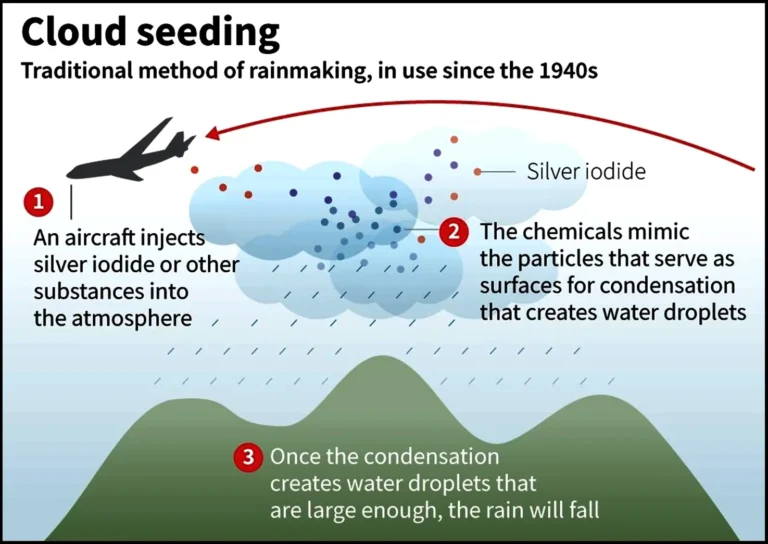Delhi recently carried out cloud-seeding operations with IIT-Kanpur for the first time in almost 50 years to induce artificial rain and reduce severe smog. However, the trials failed to produce meaningful rain due to unsuitable clouds.
What is Cloud Seeding?
- Cloud seeding is a weather-modification method to artificially trigger rainfall.
- It involves dispersing chemicals like salt particles or silver iodide into clouds using aircraft or rockets.
- These particles act as nuclei that help water vapour or ice crystals combine into larger droplets that may fall as rain.

How Does it Help Reduce Smog?
- Rain brings down dust, smoke, and particulate matter, improving air quality.
- The idea behind Delhi’s attempt:
- Wash pollutants from the air column
- Reduce PM2.5 and PM10 levels
- Give short-term relief during toxic winter smog episodes
Global History of Cloud Seeding
- First experiments began in the 1940s in the U.S. by scientists at General Electric.
- Project Cirrus: tested dry ice to create snowfall.
- Later, Project Skywater explored large-scale rain enhancement.
- Soviet Union & China used cloud seeding for weather control during major events (e.g., Beijing Olympics 2008).
India’s Cloud Seeding Journey
- Encourages cities to develop into centres of innovation and culture-driven growth.
- Boosts global visibility, tourism, and creative industry investment.
- Helps cities contribute to UN Sustainable Development Goals (SDGs) using cultural resources.
This topic is available in detail on our main website.





